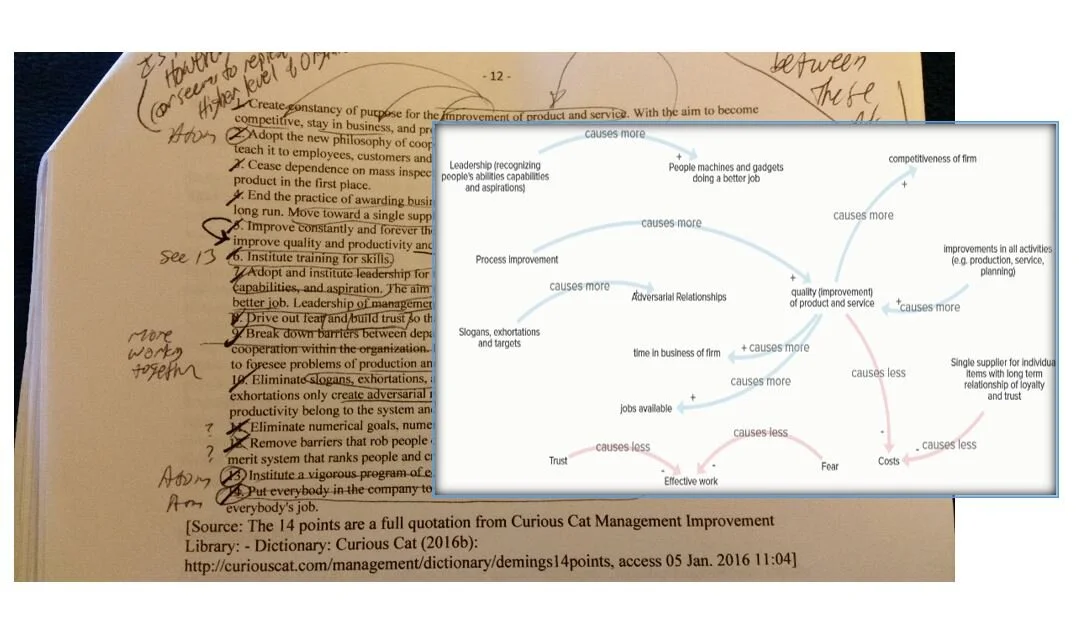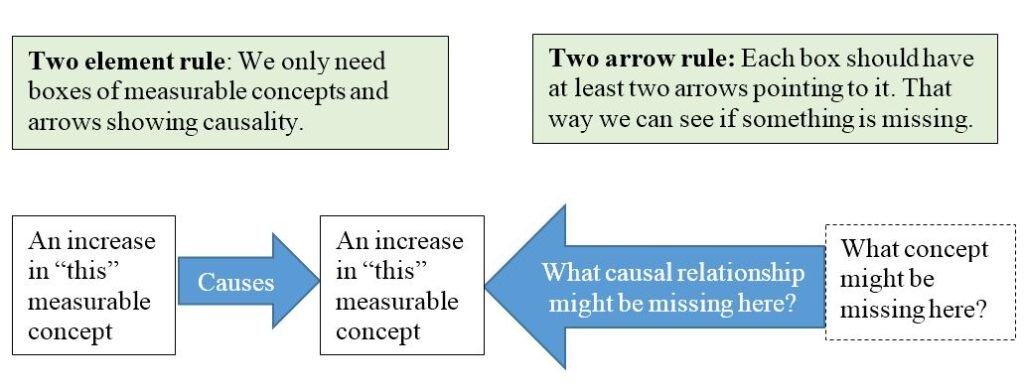Making Sense of The Knowledge Explosion with Knowledge Mapping
by Bernadette Wright and Steve Wallis
When Bernadette Wright and Steve Wallis were working on their book, Practical Mapping for Applied Research and Evaluation, they contributed this guest post to introduce a Knowledge Mapping approach.
There has been a vast explosion in the number of academic publications – journals, articles, posts, and books of all kinds. So much so, that no individual can keep up with any but the most narrow of fields. It is much easier to read a map – than to try to quickly make sense of pages of text!
To fight against fragmentation and confusion, we developed a new approach to “knowledge mapping” that is distinctly different from related techniques, such as “mind mapping” or “concept mapping.” We advocate a return to the basics of science by focusing on creating maps with only two components. Measurable concepts (words in boxes), linked by causal connections (arrows between the boxes).
Knowledge Map
Maps containing only those two elements let us share actionable understandings more easily to communicate with both scholars and practitioners. The Knowledge Map provides a unique “structural” perspective of knowledge that points the way to objective improvements in theoretical models for improved practice. Essentially, these maps let us “see the invisible” – where new pieces of research are needed to meaningfully advance our understanding of the topic.
For details and Knowledge Map examples, please visit: http://www.evalu-ate.org/blog/wright-jan2016/ . You can find a sample Chapter 1 from Practical Mapping for Applied Research and Program Evaluation and online resources. Enter the code SAGE2019 for a discount on your book purchase.


